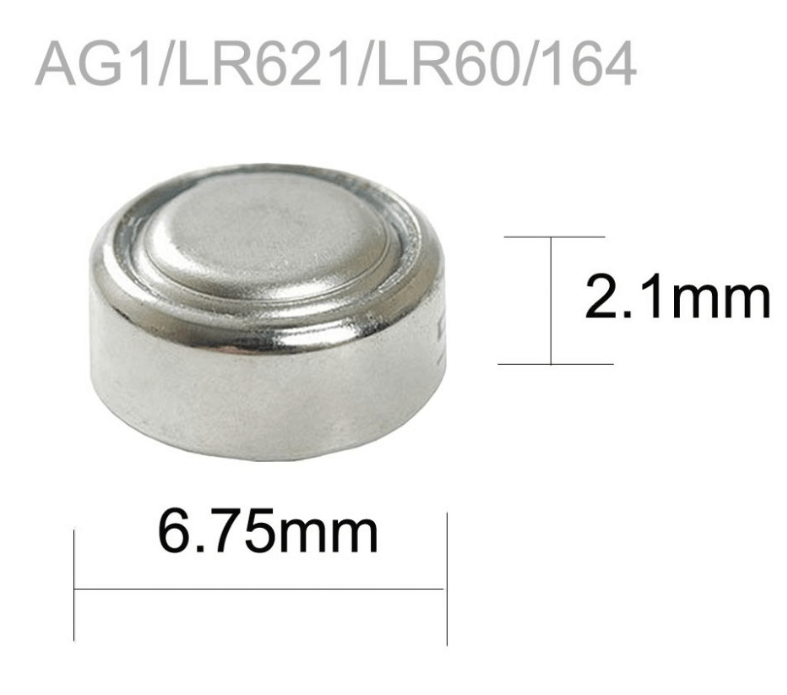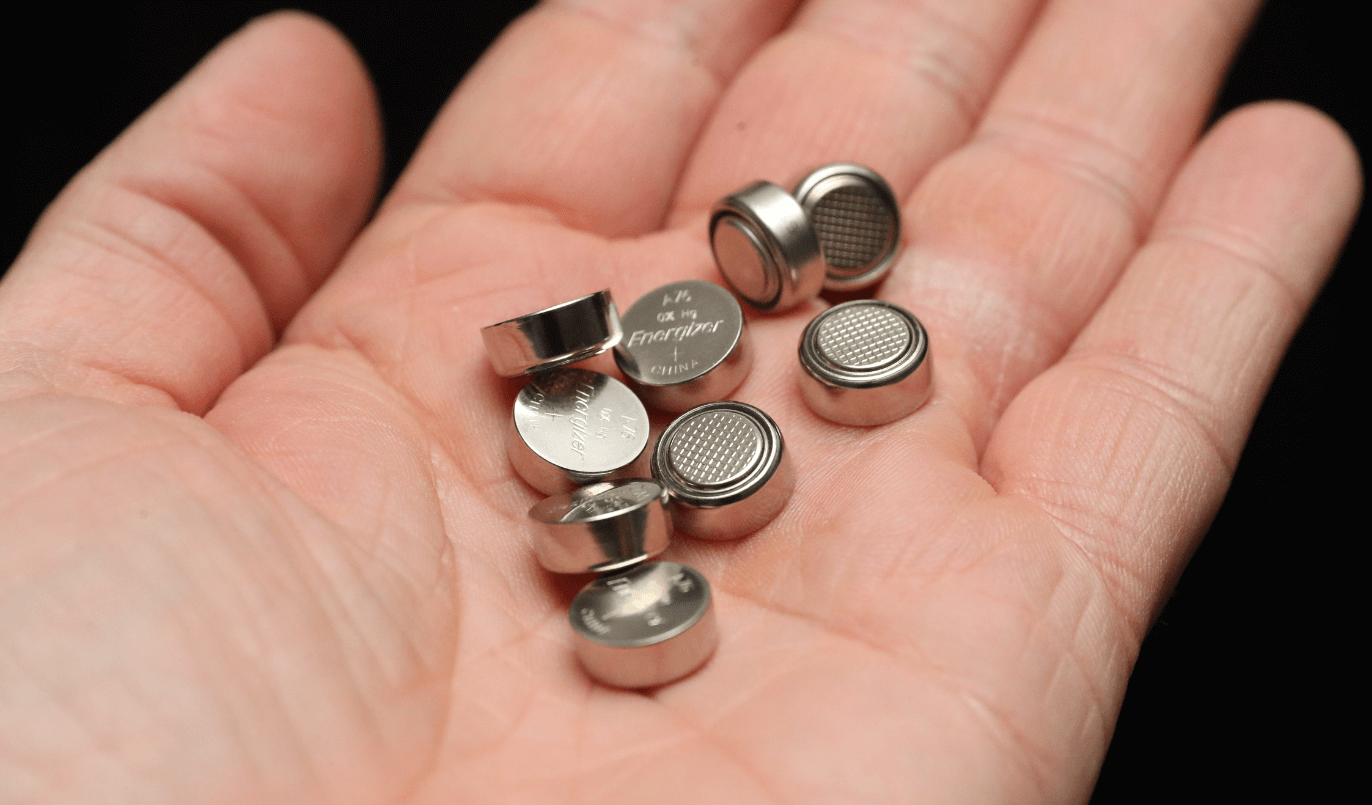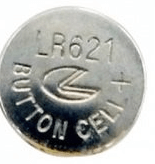AG1 Battery Equivalent Replacements
Often overlooked but highly significant, AG1 batteries energize a variety of devices from everyday gadgets to medical equipment. AG1 batteries, available in both alkaline and silver oxide variants, meet diverse needs by providing different voltage outputs and stability levels. The alkaline version, typically known as LR621, delivers a nominal voltage ideal for general electronic devices, while the silver oxide variant, recognized as SR621SW, ensures consistent performance needed for high-precision tools and medical apparatus. This article details how these small powerhouses fit into various applications, discusses their equivalent replacements, and highlights safety considerations, ensuring users can make decisions well-suited to their specific electronic requirements.
Catalog

Figure 1: Button Batteries
AG1 Battery Overview
The AG1 battery, a small button cell, is integral to the operation of a myriad of electronic devices that require compact, low-voltage power sources. Predominantly used in gadgets such as watches, calculators, and miniature electronic toys, the versatility of the AG1 battery stems from its ability to fit into slim profiles while providing essential energy.
In terms of chemical composition, AG1 batteries come in two primary forms: alkaline and silver oxide. The alkaline variant commonly outputs a voltage of 1.5 volts, which suits standard electronic devices well. On the other hand, the silver oxide version, typically marked as SR621SW, slightly exceeds this with a voltage of 1.55 volts. The small increase in voltage of the silver oxide variant results in a more consistent discharge profile, making it ideal for devices that require stable power over longer periods (such as complex digital watches and critical medical equipment).

Figure 2: Dimension of AG1 Batteries
Delving into the physical specifications, the AG1 battery boasts a diameter of about 6.8 millimeters and a height of just around 2.1 millimeters, making it incredibly suitable for use in compact assemblies. Despite its small size, the battery maintains a modest weight of approximately 0.28 grams, which contributes negligibly to the weight of the devices it powers. The performance metrics of these batteries are notable as well. They typically reach an end voltage of 0.9 volts, and they are designed to operate within a storage humidity range of 60±15% RH without condensation. Notably, the alkaline versions of AG1 batteries generally offer a capacity of around 9mAh. Contrastingly, the silver oxide versions are engineered to provide a higher capacity alongside a more stable voltage output, enhancing their suitability for long-term applications in critical devices.
The application range of AG1 batteries is broad, powering not just consumer electronics like calculators and toys but also more specialized devices. These include hearing aids, where consistent performance is vital, and laser pointers, as well as digital thermometers, which are prevalent in medical settings and require reliable accuracy. In terms of compatibility and equivalence, the chemical composition of the AG1 batteries dictates their compatibility with other battery codes. For instance, the alkaline AG1 is interchangeable with battery codes such as LR60, 164, and LR621, which are common in various electronic applications. Similarly, the silver oxide AG1 aligns with codes like 364 and SR621SW, ensuring that users can find suitable replacements easily and maintain device functionality without interruption.
Advantages and Disadvantages of AG1 battery
AG1 batteries are a popular choice for powering a wide range of small electronic devices due to their distinct advantages and manageable drawbacks. Understanding these can help users make informed decisions about their use of various applications. One significant advantage of AG1 batteries is their long shelf life. When stored properly, these batteries can remain effective for up to five years or even longer. This longevity is particularly beneficial for devices used intermittently or kept as backups, such as emergency flashlights and remote controls. AG1 batteries also boast a wide operating temperature range. They function effectively in environments as cold as -30°C and as hot as +60°C, making them versatile for use in everything from ski resort equipment to devices used in hot industrial settings. This feature ensures that the batteries are reliable under various climatic conditions, whether it’s during a frigid winter or a scorching summer.
Another key benefit is their stable voltage output. Throughout their lifespan, AG1 batteries maintain a consistent voltage, which is important for devices that require steady power to operate correctly, such as digital watches and medical devices. This stability helps prevent malfunctions and ensures accuracy in sensitive electronics. AG1 batteries are also designed to be leak-resistant. This quality minimizes the risk of damage to devices, a common issue with lesser-quality batteries that can result in costly repairs or replacements. The leak resistance of AG1 batteries provides peace of mind for users, knowing their devices are safeguarded against potential battery-related damages.
However, AG1 batteries do have some disadvantages. They tend to be more expensive compared to some other alkaline batteries. This higher cost can be a consideration for users needing large quantities of batteries or those looking to minimize expenses in applications where battery cost is a significant factor. What's more, the capacity of AG1 batteries is generally lower than that of larger batteries. This smaller capacity may not be suitable for devices that require high power over extended periods, such as high-intensity flashlights or some medical equipment. In such cases, a larger or more specialized battery might be necessary to meet energy demands.
Overall, AG1 batteries offer a reliable power source for a variety of small and sensitive electronic devices, combining long shelf life, broad temperature tolerance, stable voltage, and leak resistance. While they do come at a higher cost and with less capacity than some alternatives, their benefits often outweigh these limitations for many users and applications.

Figure 3: Button Battery
Application of AG1 Battery
AG1 batteries are utilized across a diverse array of devices, each benefiting from the specific properties of this small but powerful energy source. Their applications span everyday items and specialized equipment, making them indispensable in modern technology.
For general use, devices such as watches and calculators are often powered by AG1 batteries, particularly in models where space is at a premium. These batteries are small enough to fit into the compact compartments of modern watches and sleek, portable calculators, providing reliable power without increasing the weight or bulk of the device.
Electronic toys and laser pointers also benefit from AG1 batteries. In toys, these batteries are ideal because they can handle the intermittent bursts of power required during play. For example, when a child activates a toy, the sudden demand for energy is efficiently met by the AG1's capability to deliver quick, high-energy outputs. This is typically true for the alkaline version of the AG1 battery, known as the LR621, which is designed to accommodate these short, high-demand scenarios. AG1 batteries are also used in small flashlights, where their ability to provide a steady and reliable source of light is useful in emergencies or during routine use in poorly lit conditions. The compact nature of AG1 batteries makes them suitable for sleek, portable lighting tools that are easy to carry and store.
In contrast, more specialized applications, such as in certain medical equipment and precision instruments, require a consistent and reliable power source that can handle extended operations without fluctuation. Here, the silver oxide version of the AG1 battery, the SR621SW, is preferred. Its chemical structure allows it to maintain a stable voltage output, which is critical in medical settings where equipment must operate flawlessly for the duration of a procedure or monitoring session. The SR621SW variant is especially valued in the healthcare industry for powering devices that must remain reliable over long periods, such as portable patient monitors and diagnostic tools.
AG1 batteries cater to a wide range of needs, from providing bursts of power for children's toys and basic calculators to ensuring the consistent, reliable function of critical medical instruments. Whether in everyday use or specialized applications, these batteries are chosen for their ability to meet specific energy requirements efficiently and reliably. Their adaptability makes them a popular choice in numerous fields, reflecting their importance in powering today's electronic-driven world.
AG1 Batteries Equivalent
The AG1 battery, known interchangeably as LR621 or SR621SW, is a small button cell extensively utilized in compact electronic devices such as watches, calculators, and various other gadgets. This battery is notable for its slender profile, with a diameter of 6.8 millimeters and a height of 2.1 millimeters, and it provides a nominal voltage of 1.5 volts, making it ideal for devices that require a steady, low-voltage power supply.
When replacing an AG1 battery, knowing its battery equivalent can ensure that the battery is perfectly compatible with your device. For devices that are less sensitive to voltage variations and require a durable, cost-effective solution, alkaline versions such as LR621, LR620, and LR60 are suitable replacements. These alternatives share similar physical dimensions and voltage output but might differ slightly in terms of performance characteristics such as longevity and peak energy output.
For applications that demand a more stable voltage over time, such as in precision electronic devices or critical medical equipment, the silver oxide variants are recommended. These include the SR621SW, SR621, and the commonly available 364. Silver oxide batteries offer better longevity and consistency in voltage delivery, which is crucial for ensuring the accuracy and reliability of high-precision devices.
There is a lithium version available, designated as L621, which provides similar voltage levels but with different performance attributes, including a higher energy density and a longer shelf life. Lithium batteries are particularly useful in applications where long-term reliability and minimal battery replacement are desired.
SR621SW Battery Overview

Figure 4: SR621SW
The SR621SW is a type of silver oxide battery renowned for its consistent performance and longevity, making it a preferred choice for devices such as wristwatches, calculators, film cameras, medical instruments, cash registers, and various measurement tools including onboard microcomputers and sensors. With a shelf life of up to five years, the SR621SW provides dependable long-term power, a critical factor for devices that are not used frequently but must remain ready for use.
This battery stands out due to its "SW" designation, which indicates a low self-discharge rate. This feature is crucial for applications where batteries must retain their charge over long periods with minimal power loss, ensuring that they are always ready when needed. Devices that benefit greatly from this type of battery include analog watches, television remotes, and alarm clocks. These applications typically require only a small amount of power over an extended time, making the low drain characteristics of the SR621SW an ideal match.
In contrast, devices that have both continuous low power consumption and occasional high power needs, such as watches with additional features like backlights and alarms, pocket calculators, electronic games, and cameras, often require batteries that can handle varying power demands. For these types of applications, batteries must be capable of sustaining not only a baseline power but also peaks of high energy when the device activates additional functions.
The SR621SW battery specifications include a 1.55V output and physical dimensions of a 6.8 mm diameter and 2.2 mm height. Its size and voltage make it highly compatible with many small electronic devices, integrating seamlessly into compact internal spaces without affecting the overall design.
Overall, the SR621SW battery's capabilities make it exceptionally suitable for a wide range of applications, from everyday household devices to more specialized equipment, providing users with a reliable, low-maintenance power source that performs consistently under varied conditions.
Comparison of LR621 and SR621SW Batteries
The LR621 and SR621 batteries, both non-rechargeable button cells, share the same physical dimensions with a diameter of 6.8 millimeters and a height of 2.1 millimeters, yet they differ significantly in their chemical composition and performance characteristics.

Figure 5: LR621
The LR621 battery, also known as LR60 or AG1, is an alkaline battery that typically delivers a nominal voltage of 1.5 volts. However, as the battery discharges, its voltage begins to decline sharply. The cutoff voltage—the point at which the battery can no longer effectively power a device—is generally around 0.9 volts. However, electronic devices often have their own specified cutoff voltages, such as 1.1 or 1.2 volts, which means the device may cease functioning or start to malfunction when the battery's voltage drops to these levels. In practical terms, when you insert an LR621 into a device like a toy or a flashlight, the initial performance may seem strong, but the brightness or speed may decrease noticeably as the battery depletes. This makes LR621s less ideal for devices requiring stable voltage to operate optimally.
In contrast, the SR621SW is a silver oxide battery. This type offers a nominal voltage of 1.55 volts and a higher cutoff voltage of 1.2 volts. Unlike alkaline batteries, silver oxide batteries maintain a more stable voltage throughout their life cycle until they approach full discharge, at which point the voltage drops sharply below 1.2 volts. When you use an SR621SW in devices like digital watches or remote controls, you'll notice that they operate consistently until the battery suddenly reaches the end of its life, a feature that avoids gradual performance decline. The nominal capacity of these batteries ranges from 18 to 25 mAh, significantly higher than their alkaline counterparts.
While SR621SW batteries are typically more expensive than alkaline batteries, they offer several advantages: greater capacity, more stable and consistent voltage, higher cutoff voltage, and longer shelf life. These benefits justify the higher cost, especially for critical devices where reliable power is paramount. Silver oxide batteries are frequently recommended for high-precision electronic devices, such as watches and medical equipment, as well as in everyday electronics like car remotes and keyless entry devices. Even for children's toys and other similar applications, the slightly higher expense of SR621SW batteries is often seen as a worthwhile investment for the enhanced performance and reliability they provide.
Battery Safety Warning
The compact size and glossy exterior of SR621SW, LR621, and 364/363 batteries make them visually appealing, which can unfortunately attract the curiosity of children and pets. To address this hazard, manufacturers have implemented specific packaging strategies, using child-safe and pet-safe mechanisms. These packaging solutions are designed to be difficult for non-adults to open without adult supervision, thus significantly reducing the risk of accidental ingestion.
Despite the absence of harmful heavy metals like mercury and cadmium in these modern batteries—a result of improved industry standards and environmental regulations—the danger they pose if swallowed remains serious. When a battery is ingested, it can start an electrolytic reaction in the moist environment of the gastrointestinal tract. This reaction can lead to the release of hydroxide ions at the battery's negative pole, which can cause chemical burns and tissue damage. The severity of these burns might be less than those caused by larger batteries, which have a higher electrical output and capacity, but the potential for harm requires an urgent medical response.
Taking action swiftly is indispensable during incidents of ingestion. The recommended protocol involves quickly contacting an emergency medical facility to get professional guidance. Medical personnel typically instruct on specific steps to minimize damage while preparing for emergency intervention. The symptoms of chemical burns from batteries might not be instantly noticeable, especially in the initial stages, thus underscoring the need for a quick response. Delaying medical treatment can result in severe complications, including perforation of the esophagus or stomach, which necessitates more invasive treatments or surgeries.
Caregivers and pet owners must store batteries securely and educate themselves about the risks and emergency procedures related to battery ingestion. Awareness and preparedness play a significant role in preventing these dangerous situations and ensuring the safety of vulnerable individuals and pets.
Comparison between AG1 and AG4
As a commonly used battery, what is the difference between an AG4 battery and an AG1? AG1 and AG4 batteries are both compact button cells, commonly utilized across a variety of small electronic devices, with availability in alkaline and silver oxide forms. Both types of batteries provide essential power for devices that require reliability in a small form factor, yet they cater to slightly different needs based on their structural and chemical properties.
In the AG4 battery lineup, which includes types such as alkaline (LR626) and silver oxide (SR626SW), there's a notable emphasis on achieving a higher operational capacity suitable for devices that need a balance between physical size and longevity of use. The nominal voltage for both types of AG4 batteries is typically 1.5 volts, aligning with industry standards for similar battery sizes. However, silver oxide AG4 batteries often have a slightly higher voltage of 1.55 volts, providing a more stable power output that is crucial for high-precision devices such as watches, which demand consistent voltage to maintain accurate timekeeping.
AG4 batteries are slightly larger than their AG1 counterparts, with a diameter of approximately 6.8 millimeters. The increased height of about 2.6 millimeters in AG4 batteries allows for a greater storage capacity within the same diameter. This structural adjustment makes them particularly advantageous for devices that require a bit more power or a longer lifespan than those using AG1 batteries, such as advanced medical devices and interactive electronic toys.
From a technical standpoint, the capacity of AG4 batteries, particularly in the silver oxide version, is higher than that of AG1 batteries. This is due to the denser chemical composition of the silver oxide variant which supports longer discharge times without significant drops in power, ensuring device functionality over extended periods.
In terms of applications, AG4 batteries are not just confined to powering conventional devices like watches and calculators. They are also increasingly used in medical technology, where reliable battery performance is important for the proper functioning of devices such as glucose monitors and digital thermometers. The slightly larger size of AG4 batteries over AG1 allows for their use in newer, more power-demanding versions of small gadgets and personal care devices.
Compatibility is another aspect where AG4 batteries excel. They match a range of battery codes including LR626, 177, 376, and 377 for the alkaline version, and SR626SW for the silver oxide version, making them interchangeable across devices that specify these codes. This universal compatibility is crucial for users who seek easy replacement without the need to understand complex battery specifications.
Ultimately, the decision to choose between AG1 and AG4 batteries hinges on specific device requirements, including power consumption, physical size limitations, and expected operational lifespan. Although both AG1 and AG4 batteries share a nominal voltage, the increased height and capacity of AG4 make them suitable for more power-intensive applications. Due to these size variations, it's important for users to ensure compatibility with their devices, as a device designed for an AG1 battery might not have the necessary accommodations for an AG4, and vice versa.
Conclusion
AG1 is both a common component in less demanding equipment and a reliable source in more demanding applications. It becomes apparent that whether energizing a child's toy or a critical medical device, selecting the right type of battery—alkaline or silver oxide—can greatly influence the functionality and reliability of the application. What's more, considerations of equivalent battery replacements and the nuances of battery safety add layers of depth and the need for careful handling of these potent elements. As reliance on electronic devices grows, the AG1 battery stands as a clear example of how technology, science, and consumer demands interconnect, propelling us toward a more electrified future.
Frequently Asked Questions [FAQ]
1. Are AG1 and AG4 batteries the same?
No, AG1 and AG4 batteries are not the same. They differ in both size and voltage, making them incompatible for the same applications.
2. What are AG1 batteries used for?
AG1 batteries are used in small electronic devices such as watches, calculators, small toys, and some medical devices that require a compact power source.
3. Can I replace SR626SW with SR621SW?
No, you cannot directly replace SR626SW with SR621SW as they differ in size and voltage characteristics. Each is designed to fit specific device requirements.
4. What is the alternative to SR621SW?
A common alternative to SR621SW is the 364 battery, which shares similar voltage and size specifications and can be used interchangeably in most devices designed for SR621SW.
5. What battery number is SR621SW?
The battery number for SR621SW is 364, often used interchangeably in devices requiring this specific silver oxide battery.